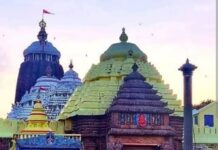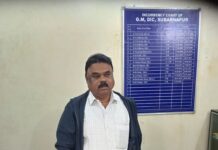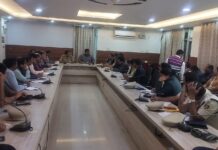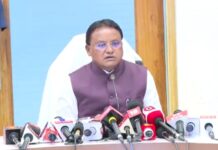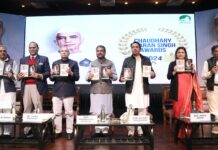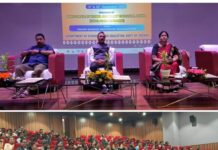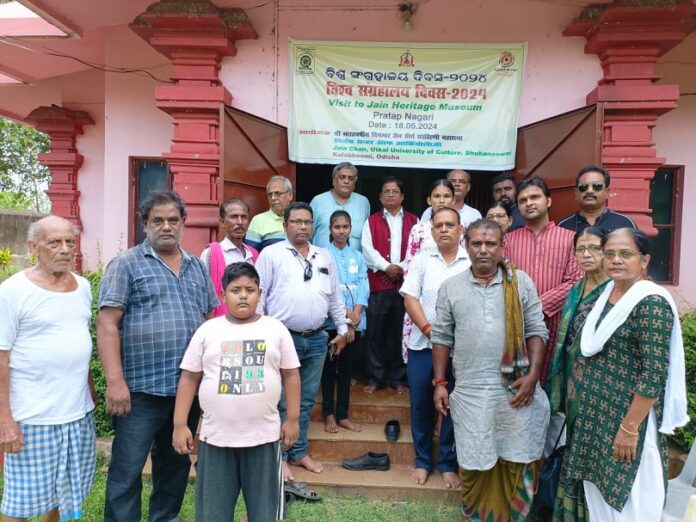
By Our Correspondent
BHUBANESWAR: On the occasion of the International Museum Day, a celebration was held at the Jain Heritage Museum in Pratap Nagari near Cuttack. This museum was set up by the State Archaeology Department with the funding the Central Government and the Jain Mahasabha a few years back.
The museum has on display nearly two dozen rare Jain images which were earlier lying scattered in various villages of the vicinity. These were found during the excavation of the Puri Main Canal. Many of these early era images date from a period of 8th to 10th Century C.E. While many of the black and green chlorite stone images are damaged and broken, the exquisite craftsmanship of the sculptors is still discernible. The large Parasvanath kept at the entrance is a unique Jain image.
The origin of Jainism in Odisha is shrouded in obscurity, but traditional accounts Jain sacred literature and epigraphic evidences suggest that it had a footing from the earliest times. However, it is established that Jainism was the state religion of Odisha in the 4th /5th Century BCE.
The earliest Jain epigraphical record is the Hati-Gumpha inscription of Kharavela dating back to the 1st century BCE, which confirms that Jainism was the state religion of Kalinga during the 3rd/4th Centuries BCE. In his eighth regnal year, Kharavela had led an expedition to Mathura to protect the age old stronghold of Jainism from the hands of the invading Yavanas. He had also commissioned several rock-cut caves for dwelling of Jain ascetics at Udayagiri and Khandagiri hills.
According to Dr. Suchitra Das, Co-ordinator of the Jain Chair at the Utkal University of Culture, Jain vestiges in the form of detached sculptures both of stone and bronze, chaumukhas, viharas, chaityas, caves and votive tablets are found throughout the length and breadth of Odisha.
The sites include Khiching, Kuntapal Naktipat, Badasahi and Koisali in Mayurbhanj; Ayodhya, Ada, Avana and Kupari in Balasore; Charampa in Bhadrak; Hatadiha, Kuansa, Tarangasagarpur, Bansabadi, Kartara, Naguan, Nayagarh, Permanandapur in Jajpur district; Baula and Podasingidi in Keonjhar; Choudwar, Athagarh, Banki, Pratapanagari in Cuttack; Udayagiri and Khandagiri caves in Khordha, Prachi valley, Achutrajpur, Barala in Puri and Kamta, Charmula, Chatua, Bhairava Singpur, Jamunda, Subei and Jeypore in Koraput district. Jain images are found in different places of the state either individually or with the sculptures of Buddhist and Brahmanical pantheons.
Anil Dhir, Intach’s Bhubaneswar Chapter Convener, is of the opinion that Jainism suffered an eclipse with the subsequent rise of Buddhism and Saivism in Odisha. The period of Jain ascendancy was over towards the beginning of Christian era , but it continued to co-exist along with other religious sects.
Jainism has all along shown a remarkable non-antagonistic attitude towards Hinduism, which according to historians, is one of the causes of its survival. Jainism continued to co-exist as a minor religion along with other religions and played an illustrious role on the cultural life of people and continues as one of the religion up to the modern times. Dhir further said that the Museum should have proper security against theft as it houses valuable images.
The small museum at Pratap Nagari has very valuable and important Jain vestiges. It is being managed by the Sri Bharatvarshiya Digamber Jain Mahasabha and Nirganth Centre of Archaeology, Bilaspur. The event was attended by students and faculty of the Culture University. Dr. Mahendra Singh, Resource Person of the Jain Chair and Dr. Pramod Kumar Pati, Chairman, Kalabhoomi were present on the occasion.


